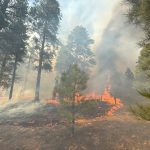
ARPA infrastructure bill work session delayed
WINDOW ROCK
From all accounts, lack of communication between the legislative and executive branches is delaying additional American Rescue Plan Act spending from moving forward.
“Nearly nine months have passed since the Navajo Nation received the first allocation of ARPA funding from the federal government,” President Jonathan Nez said in a press release last Friday. “We have to get the remaining ARPA funds allocated and approved so that we begin construction and full implementation of infrastructure improvements.”
On Jan. 20, the president’s ARPA infrastructure projects bill (No. 257-21) was tabled by the Naabik’íyáti Committee with the agreement that it would be referred to a work session for further review and return to the committee in 60 days.
The bill proposes a total of $958 million in infrastructure projects for water/wastewater ($300 million), broadband ($208 million), electricity ($200 million), housing ($100 million), and bathroom additions ($150 million).
Delegate Amber Kanazbah Crotty proposed tabling the bill so that the Council could consider dividing remaining ARPA funds by the 24 delegate districts to ensure equity in project distribution and community involvement in how the funds are spent.
At the time, delegates were pushing to hold the work session as soon as possible in conjunction with president’s office staff who prepared the bill.
However, more than three weeks later the work session has not even been scheduled.
During Nez’s state of the nation address during the winter session, he urged the Council to “act quickly” by approving the ARPA infrastructure funding proposals in the bill, even though it had been tabled the week before.
Nez also said he was willing to meet with the Council to move the bill forward as quickly as possible.
He explained that proposals contained in the bill were ranked based on the readiness of each project, completion of clearances, the availability of resources, and the federal timeline to expend the ARPA funds by Dec. 31, 2026.
He warned that if the bill was held up for another 60 days, it could further delay construction.
“We know there are questions and concerns about distribution equality among the five agencies, 24 legislative districts, and 110 chapters, but time is of the essence,” Nez said.
Also during winter session, Speaker Seth Damon told the Navajo Times that per the tabling motion by the Naabik’íyáti’ Committee, the legislative branch would meet with executive branch as soon as possible to discuss the best plan for allocating the remaining $1 billion in ARPA funds between 24 delegate regions, but that hasn’t happened either.
“Speaker Damon and the Navajo Nation Council are still waiting to hear from President Nez and the executive branch on a date to further discuss the ARPA allocations,” speaker’s office Communications Director Alray Nelson told Navajo Times on Monday.
“Nothing has been confirmed yet for this immediate and urgent matter,” he said.
However, pointing to an impasse, Jared Touchin, communications director for the president’s office, told the Navajo Times it’s in the hands of Damon as to when the work session will be held.
“The branches are communicating and a work session will be held soon, but to my knowledge an exact date has yet to be determined,” said Touchin.
‘Grinding away’
Of the $2.079 billion in ARPA funding the Nation received last year, $1.008 billion has been appropriated so far for Hardship Assistance ($557 million), Sihásin Fund and UUFB project reimbursements ($76.6 million), refunded CARES Act projects ($166.7) and Navajo Nation government administrative/regulatory support ($207.9 million).
The remaining balance of $1.07 billion still needs to be appropriated by the Council with a two-thirds vote and signed by the president.
If this amount were divided by 24 legislative districts, each delegate would have approximately $44.6 million to work with.
In order for the work session to occur, the president’s executive branch team has to regroup the bill by legislative district instead of by project category so that each delegate can identify projects they want to select for their district project listing within the budget of their allocated funding.
Crotty told the Navajo Times on Monday that she and other delegates were already moving forward with parsing out approved community projects from the bill despite the delay in the work session.
“We’re grinding away,” said Crotty. “We’re building up our projects. We already have an idea of what was in the legislation. I don’t know what’s going on with the work session.”
She said the bill as it stands does not address many communities’ needs, which delegates are trying to address.
When the president’s office’s high-level priorities for its proposed ARPA expenditure plan were first announced last October, two additional bills were going to proposed as part of the package to include: $220 million for chapters, $80 million for education, $80 million for health/behavioral health, $80 million for social services, $90 million for economic development and $20 million for tourism as well as $100 million for tribal enterprises.
Because Council increased the Hardship Assistance payments to the people by $350 million to $557 million, it was anticipated that parts of the expenditure plan would have to be cut.
Touchin had said that because of the decrease in available ARPA funding due to the increase in Hardship, the executive branch team was evaluating the proposed amounts for other expenditures. He indicated the plan was still to introduce additional legislation to fund the other priorities.
However, no additional ARPA legislation has been dropped yet, so all proposed ARPA expenditures remain on hold.
As a public service, the Navajo Times is making all coverage of the coronavirus pandemic fully available on its website. Please support the Times by subscribing.
How to protect yourself and others.
Why masks work. Which masks are best.
Resources for coronavirus assistance



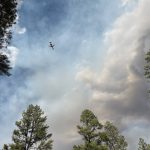
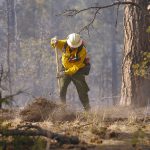
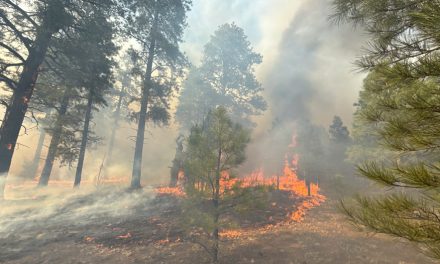
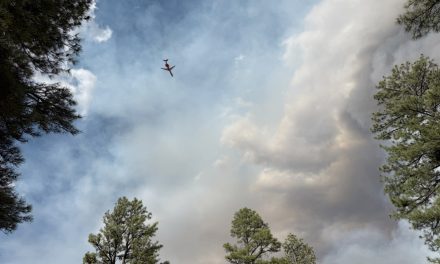



 Highway 264,
Highway 264, I-40, WB @ Winslow
I-40, WB @ Winslow